User Centred Design Project
Quattray was an ergonomic drinks’ tray designed for a user with Parkinson’s Disease. The product incorporated features that reduced the risk of transporting drinks in an elegant solution that made it a desirable product for any person looking for a more comfortable and attractive alternative to conventional trays.
Info
2018, 4 weeks, Team of 3
Role
Product Designer
Context
User Centred Design @ University of Bath
Skills
User Research, Rapid Prototyping, Iterative Design Process, Anthropometrics, Sketching
Tools
Autodesk Fusion 360, 3D Printing, Laser Cutter, Prototyping Foam
The Challenge
As part of the User Centred Design module taught at the University of Bath, and in collaboration with the design consultancy Designability, the challenge was to create a product that would help a disabled user improve his experience in and around the kitchen.
The User
Andrew, 62, was diagnosed with Parkinson’s Disease 6 years previously. His main symptoms were reduced hand dexterity, balance and leg mobility.
The Process
Thanks to a series of interviews with Andrew, and following a user-centred design approach, a drinks’ tray was designed to help with the transport of liquids, especially hot ones. Multiple low fidelity prototypes were created and presented to Andrew, who provided feedback that was used to guide the design of the final product. By following a design-with-purpose philosophy, the tray included a series of features that made it a safer and more comfortable alternative to existing trays in the market.
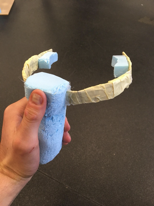
Concept 1
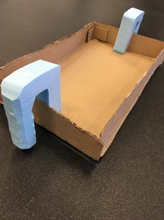
Concept 2

Concept 3
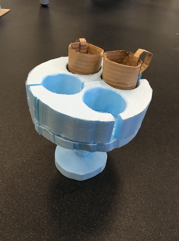
Concept 4
Video of Andrew testing the first prototypes
The Result
Quattray was the result of four weeks of intense work put into developing an elegant solution for the transport of hot drinks. The final product was presented to Andrew, who really believed the tray solved his difficulties to transport liquids. The product included various features that made the transport of liquids easier and safer for Andrew and other users with hand dexterity problems.

Annotated render of the final tray design
User Journey
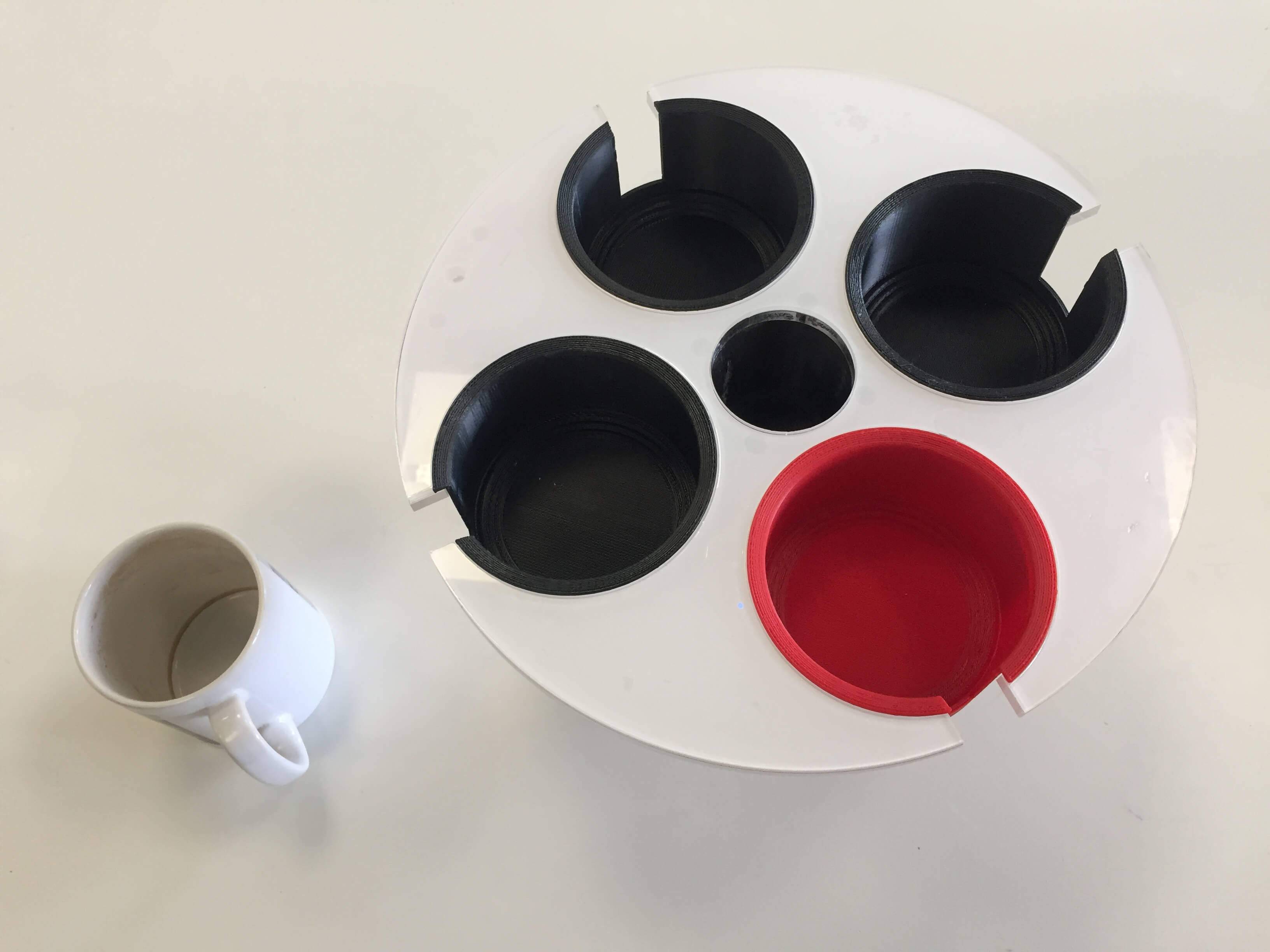
1. Prepare the drink
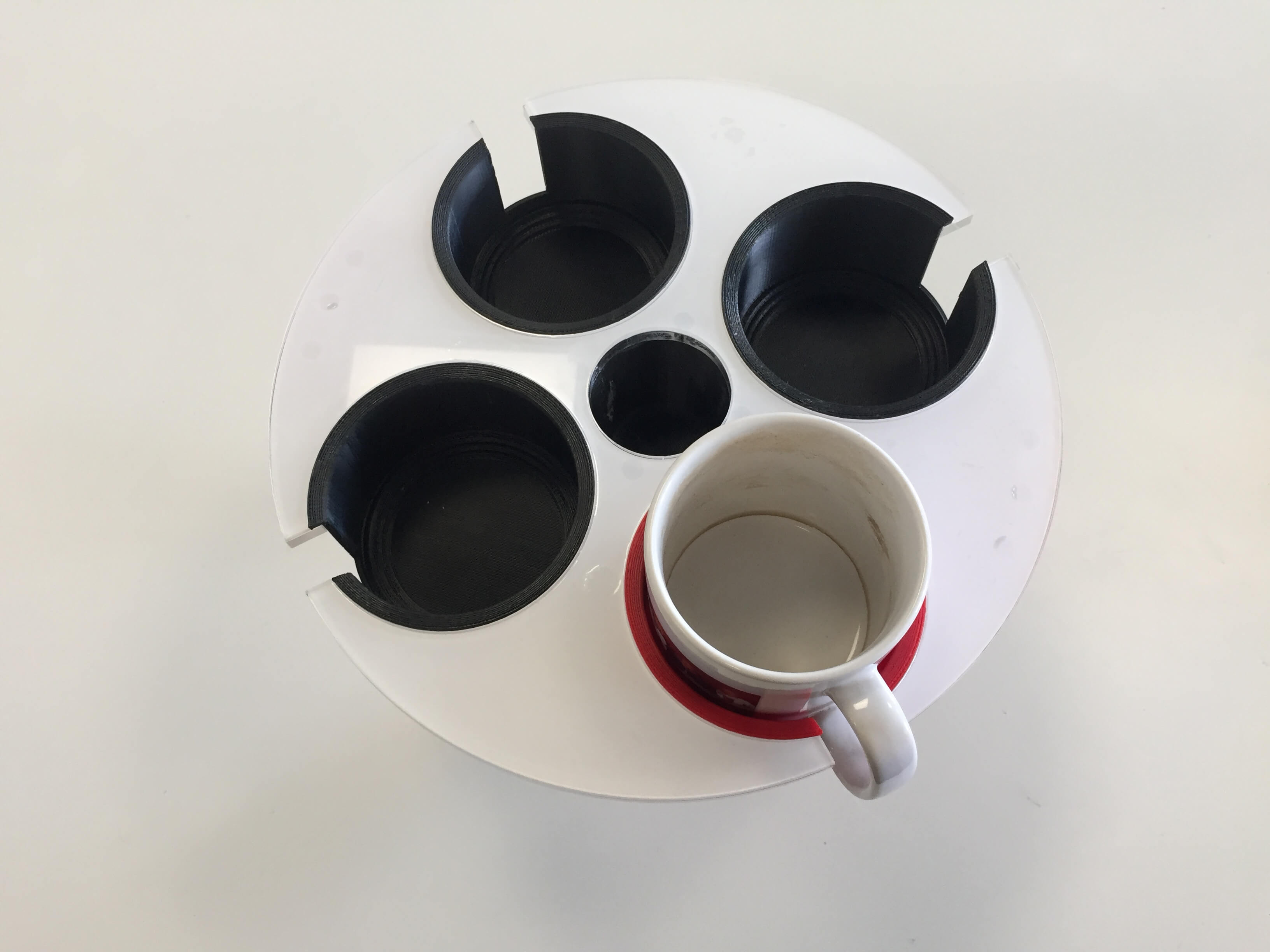
2. Place mugs in the inserts
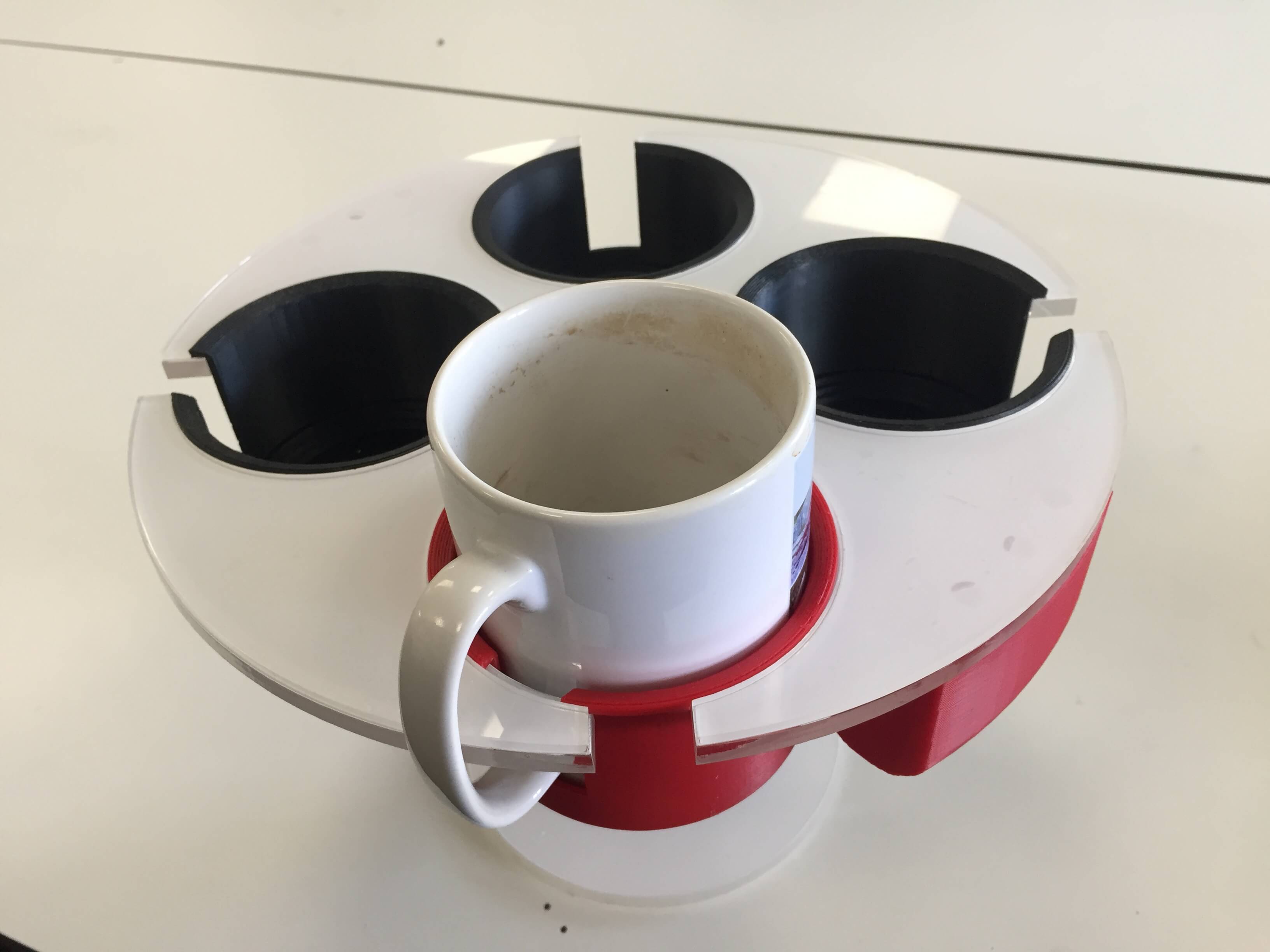
3. Rotate mug to lock in
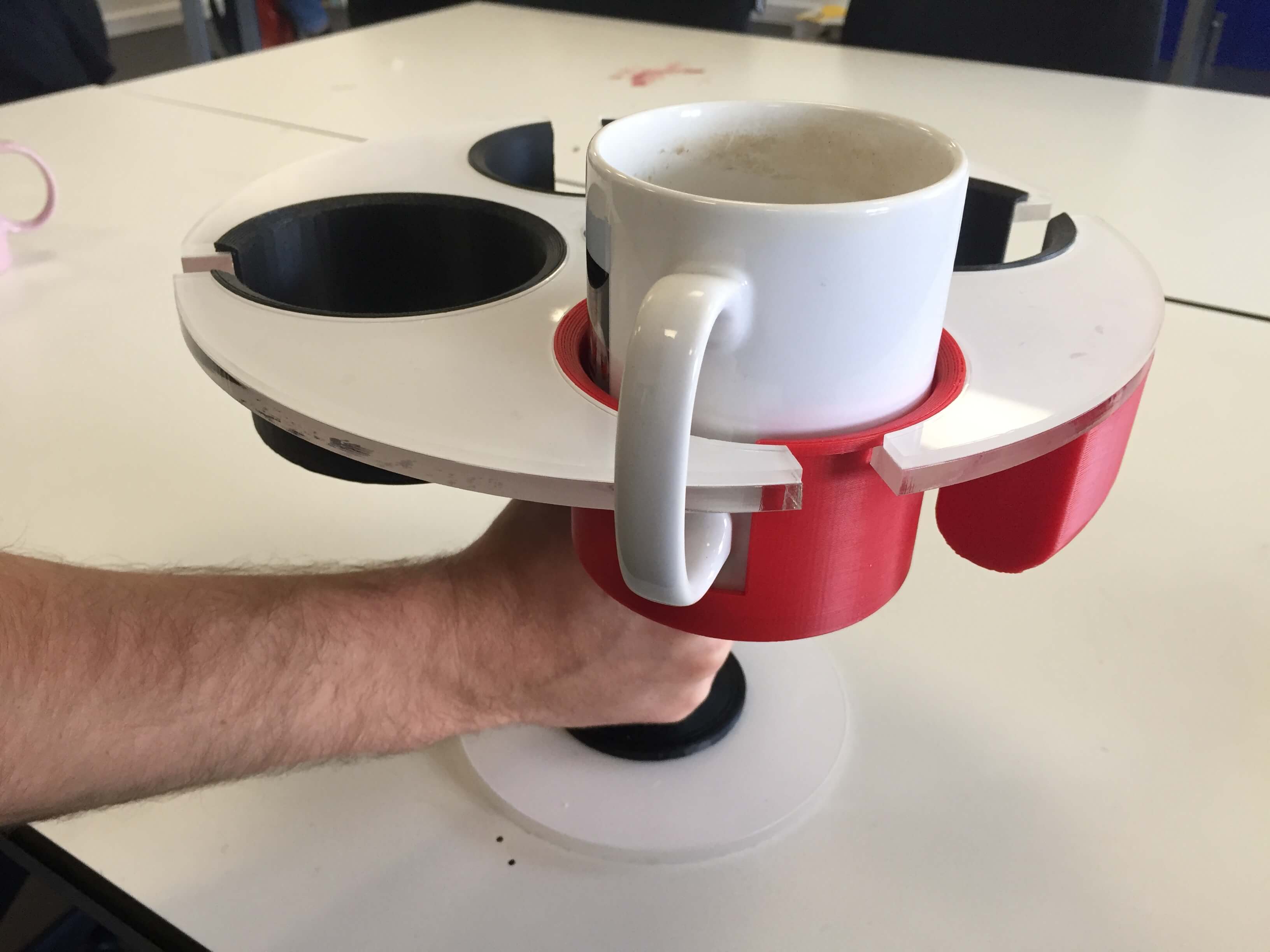
4. One-hand carry option
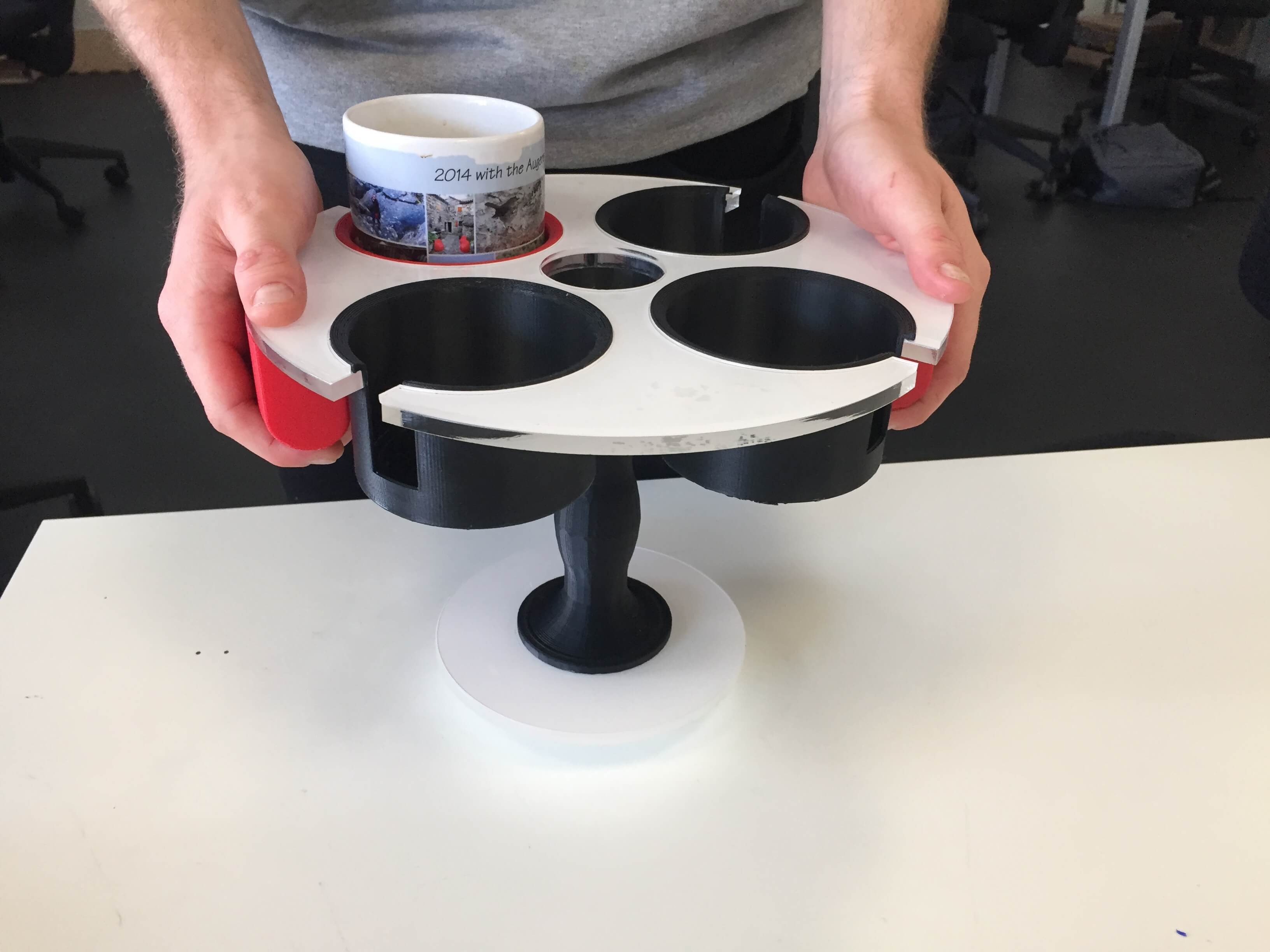
5. Two-hand carry option
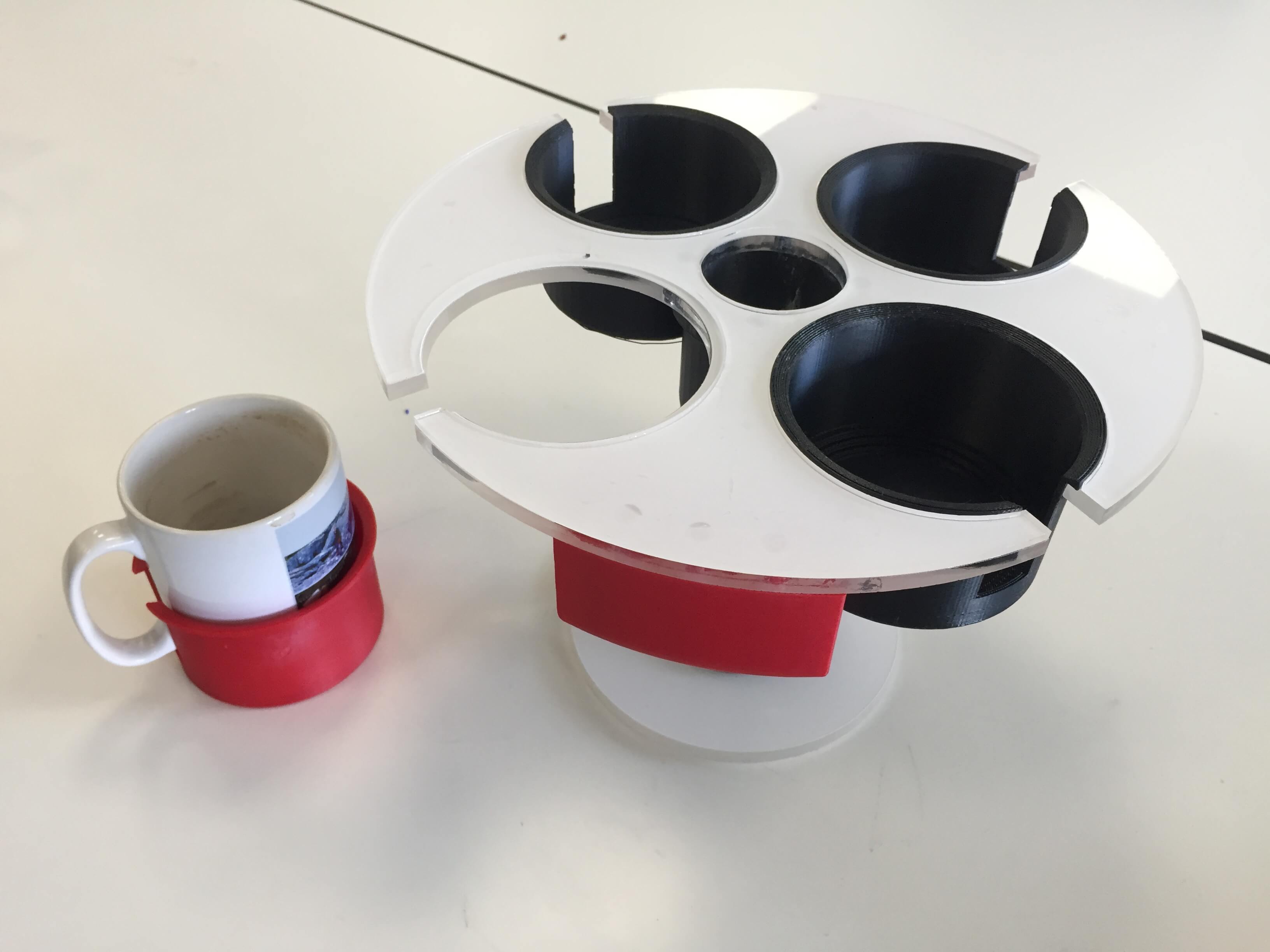
6. Coaster - avoid spillage
Design Language
The idea behind the design language of the product was that the tray had to be a desirable product that blended in with other kitchen utensils and didn't highlight the disability of the user.
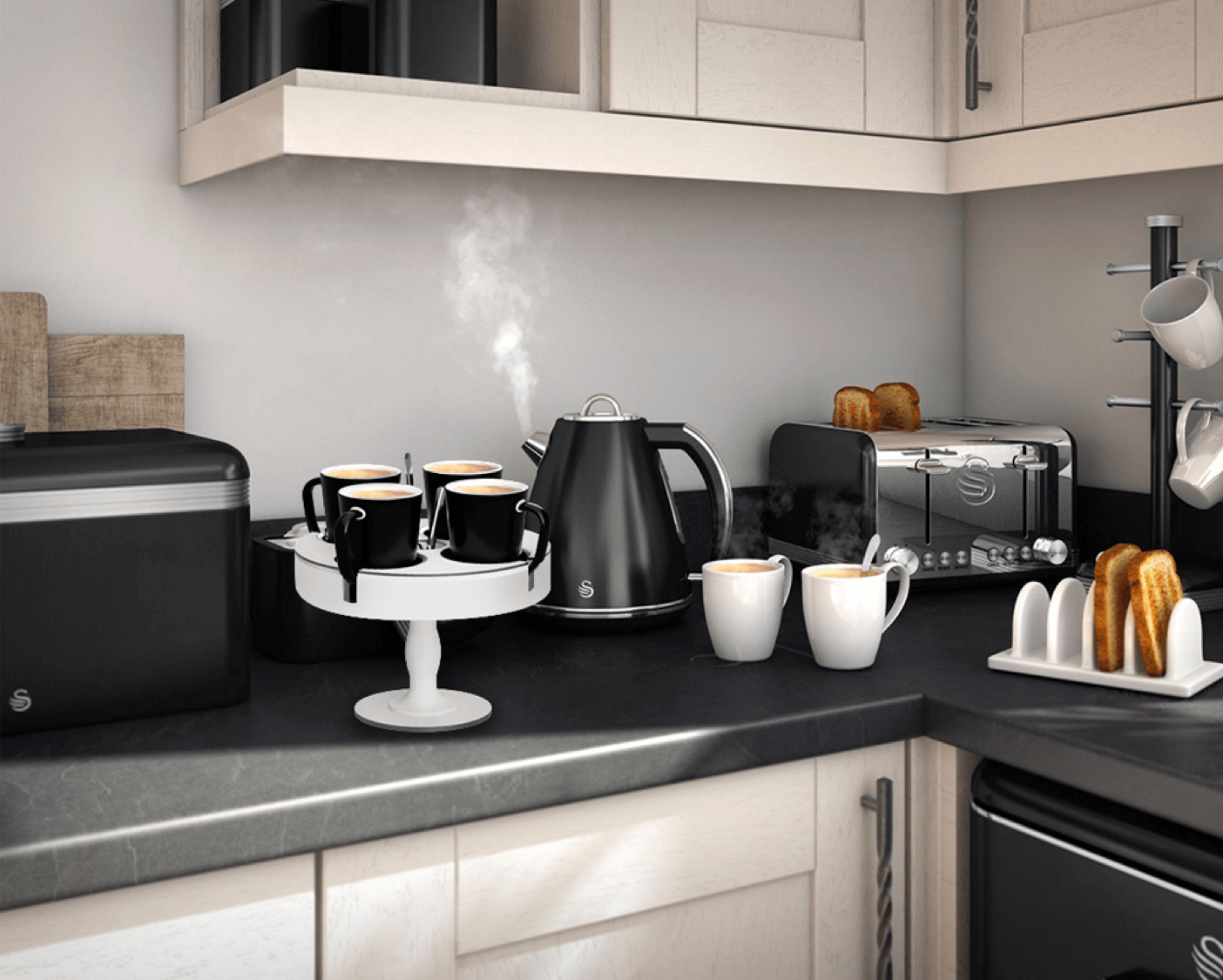
Render of the final tray design in a kitchen environment